Great Astronomers by Robert Stawell Ball (uplifting novels .txt) 📕
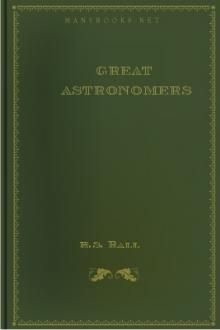
- Author: Robert Stawell Ball
- Performer: -
Book online «Great Astronomers by Robert Stawell Ball (uplifting novels .txt) 📕». Author Robert Stawell Ball
for relaxation during the course of his arduous career. In spite
of the defects of his school training he seems to have manifested
such remarkable abilities that his uncle decided to enter him in
Cambridge University. He accordingly joined Trinity College as a
sizar in 1819, and after a brilliant career in mathematical and
physical science he graduated as Senior Wrangler in 1823. It may
be noted as an exceptional circumstance that, notwithstanding the
demands on his time in studying for his tripos, he was able, after
his second term of residence, to support himself entirely by
taking private pupils. In the year after he had taken his degree
he was elected to a Fellowship at Trinity College.
Having thus gained an independent position, Airy immediately
entered upon that career of scientific work which he prosecuted
without intermission almost to the very close of his life. One of
his most interesting researches in these early days is on the
subject of Astigmatism, which defect he had discovered in his own
eyes. His investigations led him to suggest a means of correcting
this defect by using a pair of spectacles with lenses so shaped as
to counteract the derangement which the astigmatic eye impressed
upon the rays of light. His researches on this subject were of
a very complete character, and the principles he laid down are
to the present day practically employed by oculists in the
treatment of this malformation.
On the 7th of December, 1826, Airy was elected to the Lucasian
Professorship of Mathematics in the University of Cambridge, the
chair which Newton’s occupancy had rendered so illustrious. His
tenure of this office only lasted for two years, when he exchanged
it for the Plumian Professorship. The attraction which led him to
desire this change is doubtless to be found in the circumstance
that the Plumian Professorship of Astronomy carried with it at
that time the appointment of director of the new astronomical
observatory, the origin of which must now be described.
Those most interested in the scientific side of University life
decided in 1820 that it would be proper to found an astronomical
observatory at Cambridge. Donations were accordingly sought for
this purpose, and upwards of 6,000 pounds were contributed by
members of the University and the public. To this sum 5,000
pounds were added by a grant from the University chest, and in
1824 further sums amounting altogether to 7,115 pounds were given
by the University for the same object. The regulations as to the
administration of the new observatory placed it under the
management of the Plumian Professor, who was to be provided with
two assistants. Their duties were to consist in making meridian
observations of the sun, moon, and the stars, and the observations
made each year were to be printed and published. The observatory
was also to be used in the educational work of the University, for
it was arranged that smaller instruments were to be provided by
which students could be instructed in the practical art of making
astronomical observations.
The building of the Cambridge Astronomical Observatory was
completed in 1824, but in 1828, when Airy entered on the discharge
of his duties as Director, the establishment was still far from
completion, in so far as its organisation was concerned. Airy
commenced his work so energetically that in the next year after
his appointment he was able to publish the first volume of
“Cambridge Astronomical Observations,” notwithstanding that every
part of the work, from the making of observations to the revising
of the proof-sheets, had to be done by himself.
It may here be remarked that these early volumes of the
publications of the Cambridge Observatory contained the first
exposition of those systematic methods of astronomical work which
Airy afterwards developed to such a great extent at Greenwich, and
which have been subsequently adopted in many other places. No
more profitable instruction for the astronomical beginner can be
found than that which can be had by the study of these volumes, in
which the Plumian Professor has laid down with admirable clearness
the true principles on which meridian work should be conducted.
[PLATE: SIR GEORGE AIRY.
From a Photograph by Mr. E.P. Adams, Greenwich.]
Airy gradually added to the instruments with which the observatory
was originally equipped. A mural circle was mounted in 1832, and
in the same year a small equatorial was erected by Jones. This
was made use of by Airy in a well-known series of observations of
Jupiter’s fourth satellite for the determination of the mass of
the great planet. His memoir on this subject fully ex pounds the
method of finding the weight of a planet from observations of the
movements of a satellite by which the planet is attended. This
is, indeed, a valuable investigation which no student of astronomy
can afford to neglect. The ardour with which Airy devoted himself
to astronomical studies may be gathered from a remarkable report
on the progress of astronomy during the present century, which he
communicated to the British Association at its second meeting in
1832. In the early years of his life at Cambridge his most famous
achievement was connected with a research in theoretical astronomy
for which consummate mathematical power was required. We can only
give a brief account of the Subject, for to enter into any full
detail with regard to it would be quite out of the question.
Venus is a planet of about the same size and the same weight as
the earth, revolving in an orbit which lies within that described
by our globe. Venus, consequently, takes less time than the earth
to accomplish one revolution round the sun, and it happens that
the relative movements of Venus and the earth are so proportioned
that in the time in which our earth accomplishes eight of her
revolutions the other planet will have accomplished almost exactly
thirteen. It, therefore, follows that if the earth and Venus are
in line with the sun at one date, then in eight years later both
planets will again be found at the same points in their orbits.
In those eight years the earth has gone round eight times, and
has, therefore, regained its original position, while in the same
period Venus has accomplished thirteen complete revolutions, and,
therefore, this planet also has reached the same spot where it was
at first. Venus and the earth, of course, attract each other, and
in consequence of these mutual attractions the earth is swayed
from the elliptic track which it would otherwise pursue. In like
manner Venus is also forced by the attraction of the earth to
revolve in a track which deviates from that which it would
otherwise follow. Owing to the fact that the sun is of such
preponderating magnitude (being, in fact, upwards of 300,000 times
as heavy as either Venus or the earth), the disturbances induced
in the motion of either planet, in consequence of the attraction
of the other, are relatively insignificant to the main controlling
agency by which each of the movements is governed. It is,
however, possible under certain circumstances that the disturbing
effects produced upon one planet by the other can become so
multiplied as to produce peculiar effects which attain measurable
dimensions. Suppose that the periodic times in which the earth
and Venus revolved had no simple relation to each other, then the
points of their tracks in which the two planets came into line
with the sun would be found at different parts of the orbits, and
consequently the disturbances would to a great extent neutralise
each other, and produce but little appreciable effect. As,
however, Venus and the earth come back every eight years to nearly
the same positions at the same points of their track, an
accumulative effect is produced. For the disturbance of one
planet upon the other will, of course, be greatest when those two
planets are nearest, that is, when they lie in line with the sun
and on the same side of it. Every eight years a certain part of
the orbit of the earth is, therefore, disturbed by the attraction
of Venus with peculiar vigour. The consequence is that, owing to
the numerical relation between the movements of the planets to
which I have referred, disturbing effects become appreciable which
would otherwise be too small to permit of recognition. Airy
proposed to himself to compute the effects which Venus would have
on the movement of the earth in consequence of the circumstance
that eight revolutions of the one planet required almost the same
time as thirteen revolutions of the other. This is a mathematical
inquiry of the most arduous description, but the Plumian Professor
succeeded in working it out, and he had, accordingly, the
gratification of announcing to the Royal Society that he had
detected the influence which Venus was thus able to assert on the
movement of our earth around the sun. This remarkable investigation
gained for its author the gold medal of the Royal Astronomical
Society in the year 1832.
In consequence Of his numerous discoveries, Airy’s scientific fame
had become so well recognised that the Government awarded him a
special pension, and in 1835, when Pond, who was then Astronomer
Royal, resigned, Airy was offered the post at Greenwich. There
was in truth, no scientific inducement to the Plumian Professor to
leave the comparatively easy post he held at Cambridge, in which
he had ample leisure to devote himself to those researches which
specially interested him, and accept that of the much more arduous
observatory at Greenwich. There were not even pecuniary
inducements to make the change; however, he felt it to be his duty
to accede to the request which the Government had made that he
would take up the position which Pond had vacated, and accordingly
Airy went to Greenwich as Astronomer Royal on October 1st, 1835.
He immediately began with his usual energy to organise the
systematic conduct of the business of the National Observatory.
To realise one of the main characteristics of Airy’s great work at
Greenwich, it is necessary to explain a point that might not
perhaps be understood without a little explanation by those who
have no practical experience in an observatory. In the work of an
establishment such as Greenwich, an observation almost always
consists of a measurement of some kind. The observer may, for
instance, be making a measurement of the time at which a star
passes across a spider line stretched through the field of view;
on another occasion his object may be the measurement of an angle
which is read off by examining through a microscope the lines of
division on a graduated circle when the telescope is so pointed
that the star is placed on a certain mark in the field of view.
In either case the immediate result of the astronomical
observation is a purely numerical one, but it rarely happens,
indeed we may say it never happens, that the immediate numerical
result which the observation gives expresses directly the quantity
which we are really seeking for. No doubt the observation has
been so designed that the quantity we want to find can be obtained
from the figures which the measurement gives, but the object
sought is not those figures, for there are always a multitude of
other influences by which those figures are affected. For
example, if an observation were to be perfect, then the telescope
with which the observation is made should be perfectly placed in
the exact position which it ought to occupy; this is, however,
never the case, for no mechanic can ever construct or adjust a
telescope so perfectly as the wants of the astronomer demand. The
clock also by which we determine the time of the observation
should be correct, but this is rarely if ever the case. We have
to correct our observations for such errors,
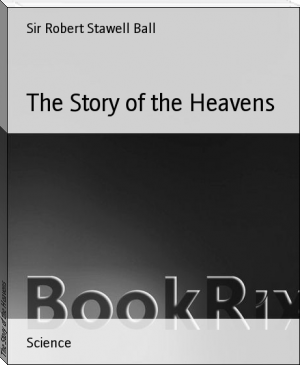
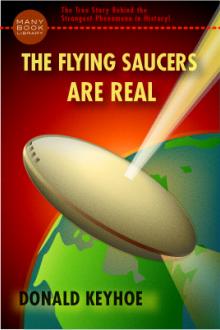

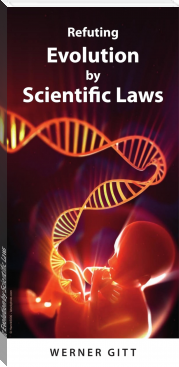
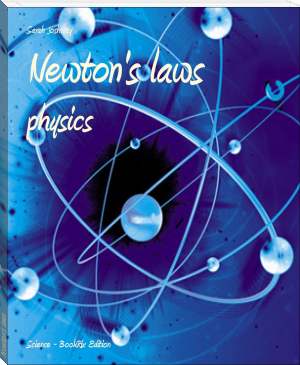
Comments (0)